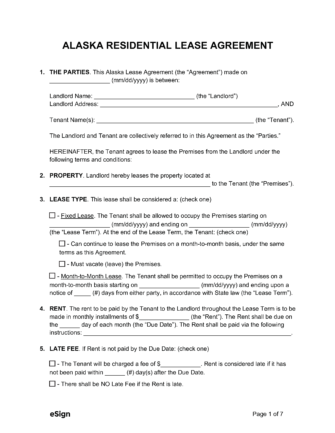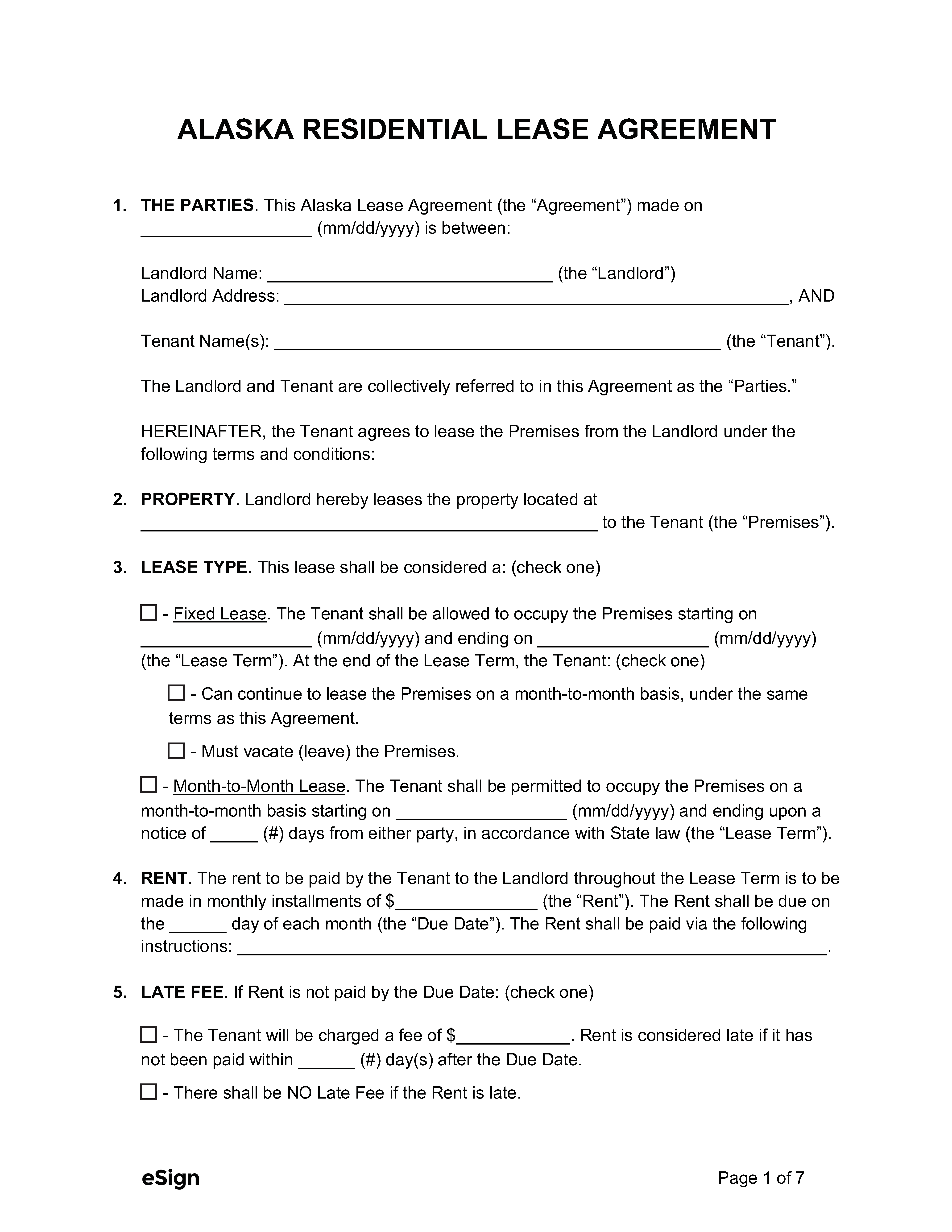Lease Agreements: By Type (6)
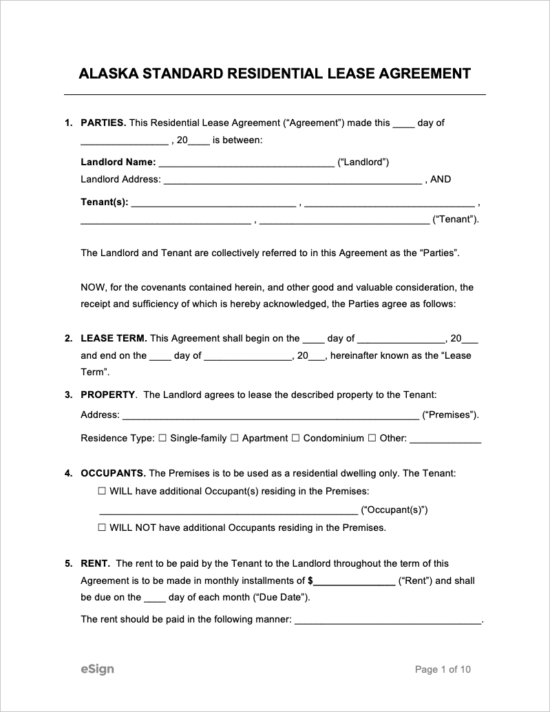 Standard (1-Year) Lease Agreement – This lease gives tenants the right to occupy a residential unit for one year. Standard (1-Year) Lease Agreement – This lease gives tenants the right to occupy a residential unit for one year.
Download: PDF, Word (.docx), OpenDocument |
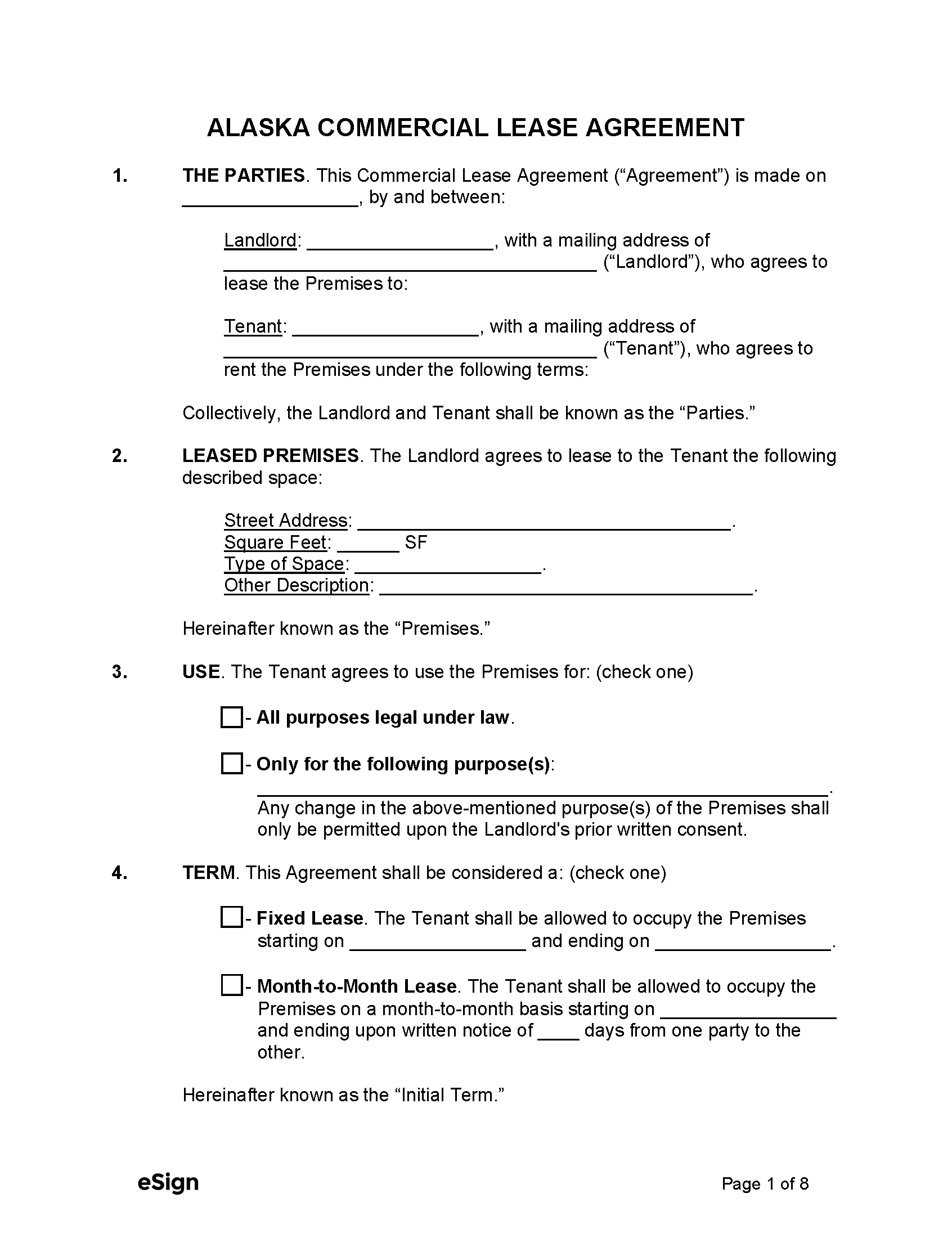 Commercial Lease Agreement – For retail, industrial, office, or any other non-residential property rental. Commercial Lease Agreement – For retail, industrial, office, or any other non-residential property rental.
Download: PDF, Word (.docx), OpenDocument |
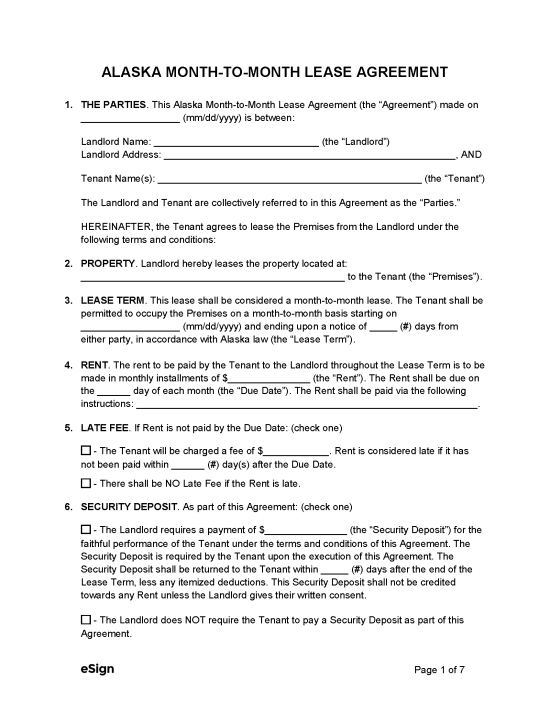 Month-to-Month Lease Agreement – A lease without a set expiration date that automatically renews until either the landlord or tenant decides to terminate it. Month-to-Month Lease Agreement – A lease without a set expiration date that automatically renews until either the landlord or tenant decides to terminate it.
Download: PDF, Word (.docx), OpenDocument |
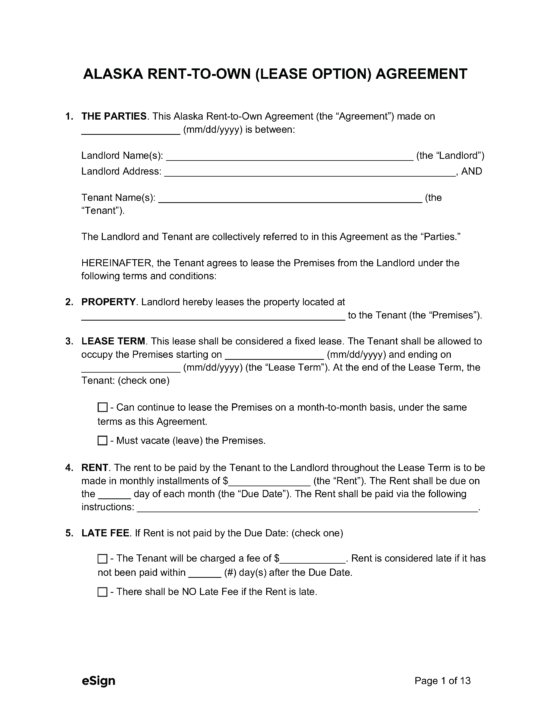 Rent-to-Own Agreement (Lease Option) – A residential lease that allows the tenant to purchase the property during an option term. Rent-to-Own Agreement (Lease Option) – A residential lease that allows the tenant to purchase the property during an option term.
Download: PDF, Word (.docx), OpenDocument |
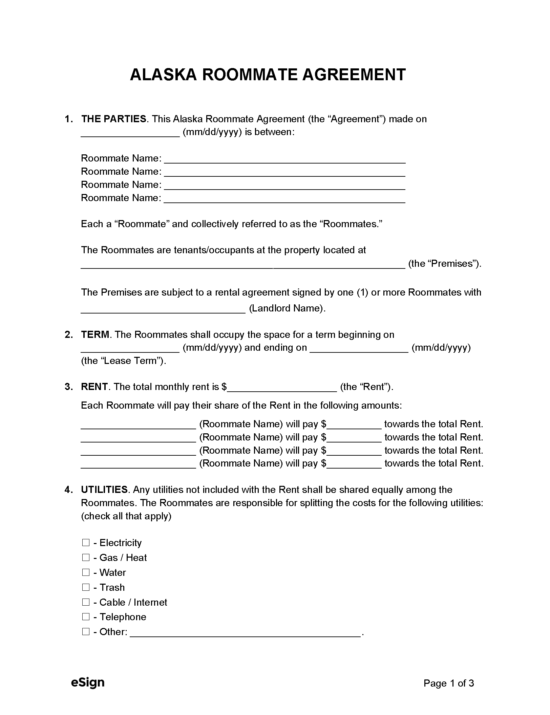 Roommate Agreement – A document outlining certain obligations and responsibilities between roommates. Roommate Agreement – A document outlining certain obligations and responsibilities between roommates.
Download: PDF, Word (.docx), OpenDocument |
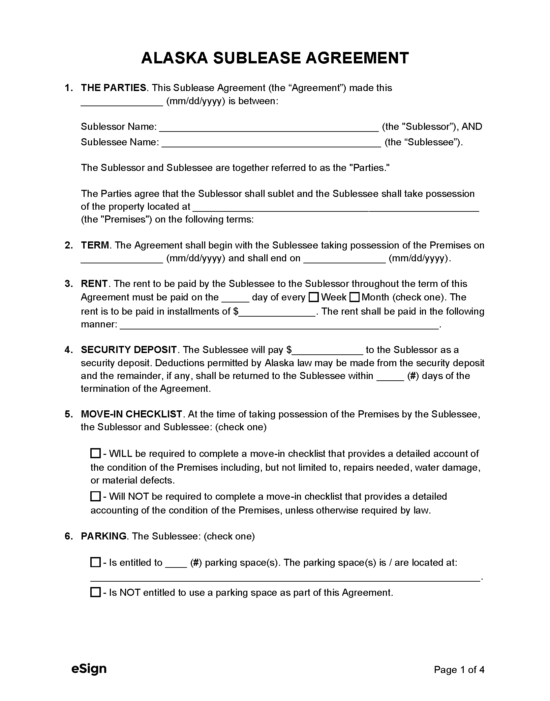 Sublease Agreement – Allows a tenant to rent some or all of their leased space to someone else, subject to the landlord’s approval. Sublease Agreement – Allows a tenant to rent some or all of their leased space to someone else, subject to the landlord’s approval.
Download: PDF, Word (.docx), OpenDocument |
Required Disclosures (4)
- Absence – The lease must state that the tenant is required to notify the landlord if they plan to be away from the property for more than seven days.[1]
- Landlord’s Information – The tenant must receive the name and address of the property manager and any owner or agent responsible for official communications. If these details change, the tenant must be informed.[2]
- Lead-Based Paint Disclosure (PDF) – A disclosure about lead-based paint must be given to new tenants if the rental property was built prior to 1978.[3]
- Withholding Security Deposit – The landlord must provide the tenant with the terms and conditions for withholding prepaid rent or the security deposit.[4]
Security Deposits
Maximum Amount ($) – The maximum a landlord can demand is two months’ rent. However, if the monthly rent is more than $2,000, there is no limit on the security deposit amount.[5]
Collecting Interest – If a security deposit earns interest, the interest must be paid to the trustor (tenant).[6]
Returning to Tenant – Must be returned within 14 days if no deductions are made to the security deposit. If deductions are made, the landlord has 30 days to return the deposit.[7]
Itemized list Required? – Yes, if deductions are made to the tenant’s security deposit, an itemized list must be delivered within 30 days of lease termination.[8]
Separate Bank Account? – Yes, the landlord is required to deposit the funds in a separate trust account.[9]
Landlord’s Entry
General Access – Landlords must provide 24 hours’ notice and can only enter with the tenant’s consent.[10] A tenant cannot unreasonably deny entry if it’s necessary for any of the following reasons:[11]
- Inspecting the property
- Making necessary or agreed repairs, decorations, alterations, or improvements
- Supplying necessary or agreed services
- Removing personal items belonging to the landlord that are not covered under a lease
- Showing the property to prospective or actual purchasers, mortgagees, tenants, workers, or contractors
Immediate Access – In an emergency, the landlord may enter the premises without the tenant’s consent.[12]
Rent Payments
Grace Period – There is no grace period. Rent is paid at the time and place agreed upon by the parties.[13]
Maximum Late Fee ($) – Alaska law does not specify a maximum. Generally, landlords can charge a small flat fee or a percentage-based fee that’s 5% above the Federal Reserve discount rate; however, if no discount rate is set, the maximum interest-based fee is 10.5%.[14]
Bad Check (NSF) Fee – $30 is the maximum fee that can be charged for a bad check.[15]
Withholding Rent – If the landlord breaches the lease by not providing essential services like hot water and heat, the tenant can inform the landlord of the violation, restore the services, and subtract the costs from their rent.[16]
Breaking a Lease
Non-Payment of Rent – A 7-day notice can be delivered to the tenant the day after their rent is late.[17]
Non-Compliance – A 10-day notice may be delivered to the tenant for any lease violation that can be cured.[18]
Lockouts – The landlord cannot change the tenant’s locks on the property without a court order. If a tenant is unlawfully excluded from the property, they can sue the landlord and recover up to one and a half times their damages.[19]
Leaving Before the End Date – If a tenant leaves before the end date, they will be liable for rent until the end of the lease term or the landlord re-rents the space, whichever is earlier.[20]
Lease Termination
Month-to-Month Tenancy – A 30-day notice is required for either party to terminate a month-to-month lease arrangement.[21]
Unclaimed Property – If the tenant leaves behind personal items after the lease has ended, the landlord must give notice and allow 15 days for retrieval. If unclaimed, the landlord can sell the valuable items and throw out everything else.[22]
Sources
- AS 34.03.150
- AS 34.03.080
- EPA/HUD Fact Sheet
- AS 34.03.070(c)
- AS 34.03.070(a)
- 12 AAC 64.210, The Alaska Landlord & Tenant Act: what it means to you (p. 5)
- AS 34.03.070(g)
- AS 34.03.070(b)
- AS 34.03.070(c)
- AS 34.03.140(c)
- AS 34.03.140(a)
- AS 34.03.140(b)
- AS 34.03.020(c)
- The Alaska Landlord & Tenant Act: what it means to you (p. 3)
- AS 09.68.115(a)(2)
- AS 34.03.180
- AS 34.03.220(b)
- AS 34.03.220(a)(2)
- AS 34.03.210
- AS 34.03.230, The Alaska Landlord & Tenant Act: what it means to you (p. 21)
- AS 34.03.290(b)
- AS 34.03.260
